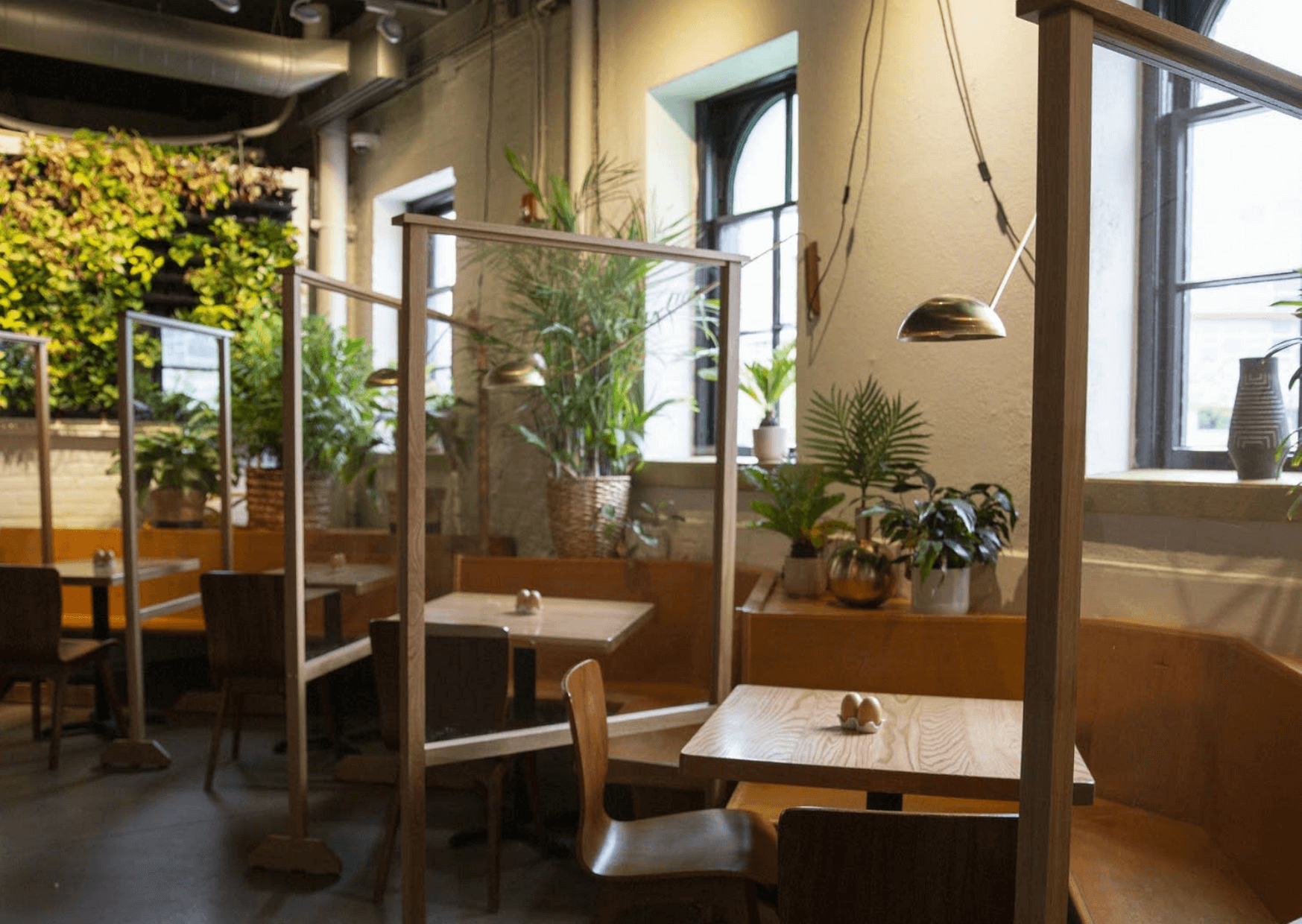
Restaurant Renovation in Covid Times
Innovation and creativity are how the hospitality and leisure industry is responding to the COVID-19 crisis. More and more restaurant owners and managers decide to temporarily close down restaurants and renovate them because they are aware of recent research showing that people may be more susceptible to contracting COVID-19 in confined spaces. During the lockdown period, many restaurants survived by offering takeaway meals. The most frequently renovated areas are the restaurant dining room, kitchen and front of the house. Restaurants create take away windows and often try to extend the dining space to the outside by designing a back patio with glass doors. Recent refurbishments in the hospitality industry include adapting areas and equipment to current restrictions related to COVID-19.
Scope of Work
Restaurant refurbishment usually takes from 4 to 12 weeks, depending on the scope of works. It requires the premises to be closed while contractors and installers are working. This can lead to a huge loss of income. Therefore many managers decide to renovate during a nationwide blockade. If a restaurant does not operate it is worth using this downtime for something that will benefit in the long run. The scope of work and the renovation project depends on the company’s condition. In the case of old, outdated enterprises, only a complete renovation of the interior will bring benefits. Painting walls in a restaurant should be carried out on average every 5 years. Hiring a professional painter will allow the site to regain its former glory, remove stains and make it look alive. In the times of COVID-19, the most popular element of the renovation of a restaurant dining room is cabin-style seating installation, which allows restaurateurs to adjust the interior space to the safety rules and comfort of guests.
Restaurant Furniture Replacement
Restaurant furniture is intensively used every day, which leads to a much shorter lifespan. Broken, uneven chair legs, stains or odours that cannot be removed, dents, tears in the upholstery should be an impulse to order and install new restaurant furniture. Installing new contract furniture not only makes the interior visually appealing but, more importantly, can affect the customer’s perception and experience, which impacts revenue.
Renovation or Replacement of a Hardwood Floor
Hardwood is often chosen by restaurateurs for flooring because it is a very durable and noble material. Unfortunately, it is exposed to high traffic and stains from food and drinks. Worn, wooden floors are subject to various discolouration and scratches. Appropriate preparation of the floor for renovation is the first and most important step. Cleaning the floors to remove dust, dirt or stains will facilitate a thorough inspection of the floors and determination of the extent of the damage. The next step is filling any cracks, replacement or repairing damaged planks, and align any exposed nails or protrusions with the floor surface. Sanding the floor can only be done by a professional as this requires the use of large machines.
Forecasts for the Future
Restaurants in the post-COVID-19 world will have to adapt to the new normal. The future is the end of shared spaces and an increase in the number of robotic waiters and bartenders. The cafeterias and self-service points will likely cease to exist. Many restaurants already use transparent covers to isolate guests. Some of them even use mannequins or teddy bears to “fill places” and effectively enforce social distancing. In the future, concerns about airflow in confined spaces. It will cause an increase in the number of outdoor spaces. Traditional menus will soon be replaced by digital apps. Restaurants will also collect and store visitor data for a period of time to enable contact tracking. Many restaurants in the future will use individual screens or small glasshouses around each table to keep customers safe from each other. Some of the restaurants already serving food on longboards to distance themselves from the guests.
